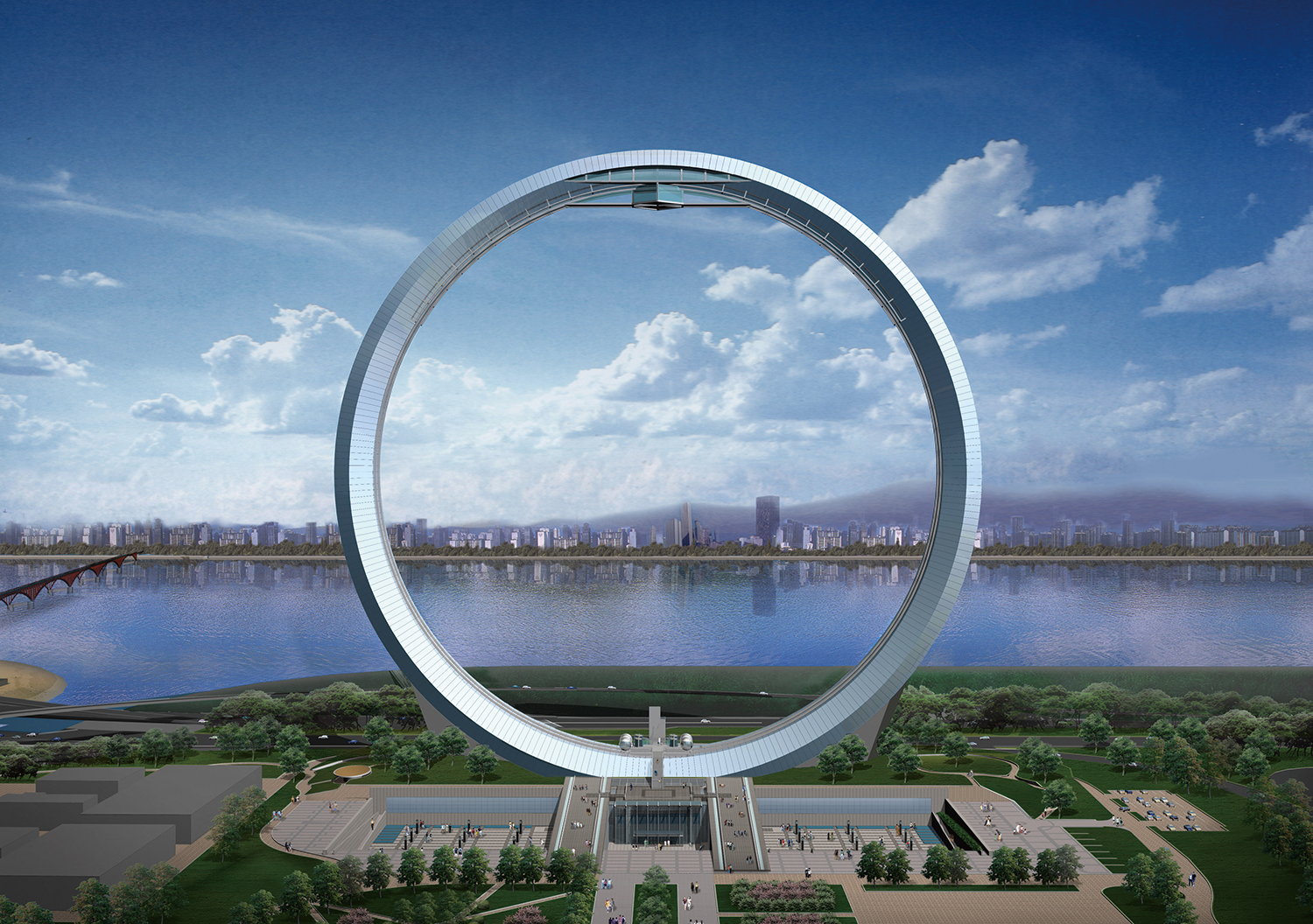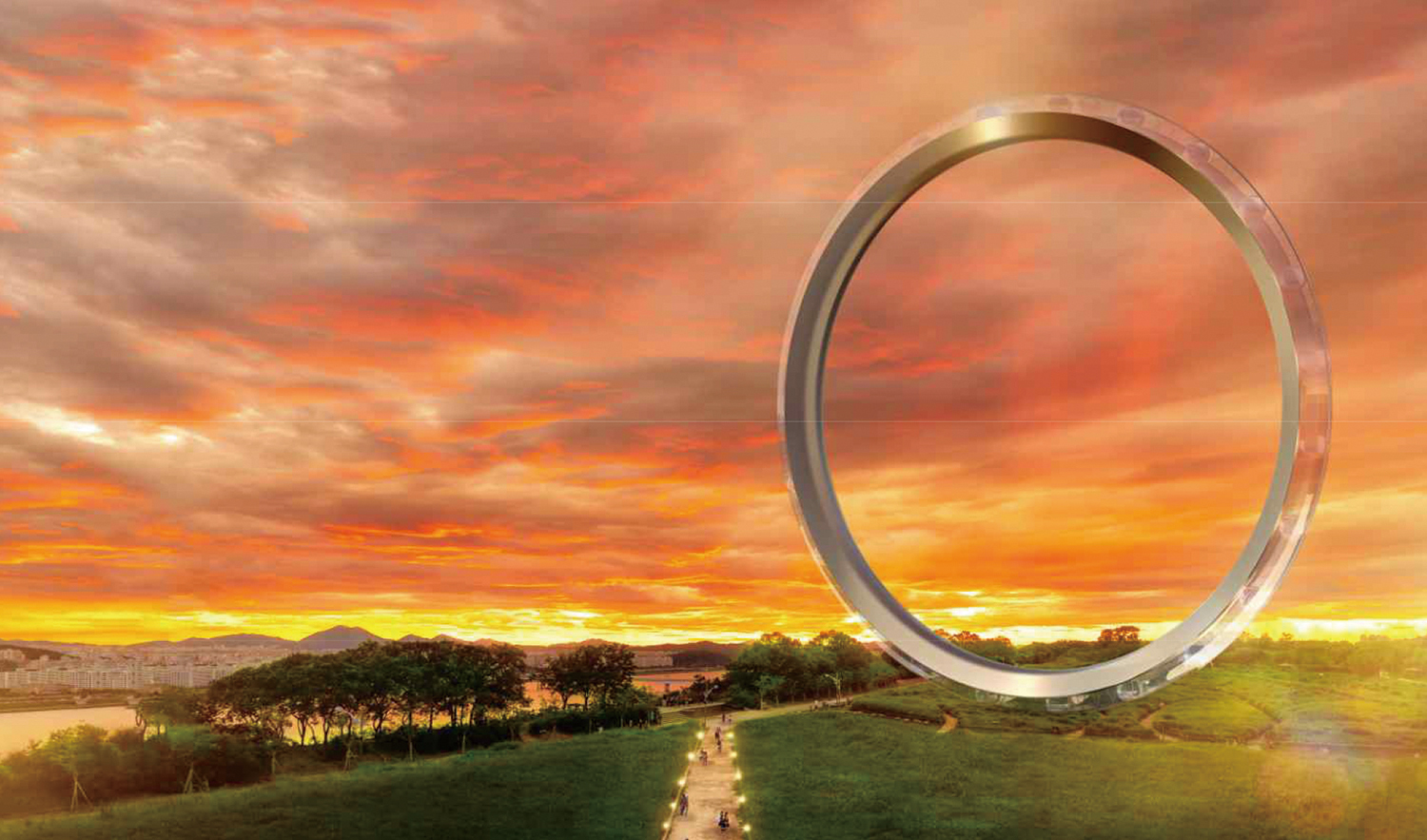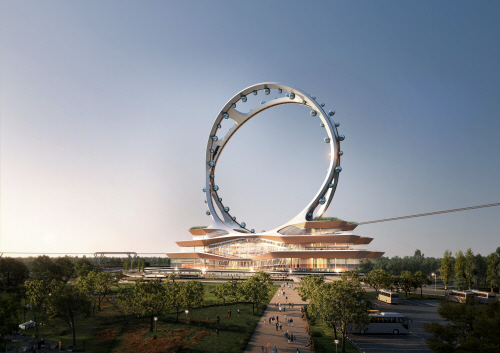SPACE December 2023 (No. 673)

Rendering image of Millennium Gate (2000) / Image courtesy of Woo-projects Architects

Rendering image of Seoul Ring Zero (2023) / Image courtesy of Seoul Metropolitan Government
On Mar. 8, 2023, Seoul Metropolitan Government (SMG) announced that it would proceed with ‘Seoul Ring Zero’ as part of its ‘Great Han River Project’. This raised concerns both inside and outside the architectural community. On Mar. 14, the Korea Architects Institute (chairman, Lim Hyoungnam) issued an official statement strongly criticising this project as act of copyright infringement, drawing on the Millennium Gate (2000, the original name of the proposal was Seoul Ring) and the legitimacy of the project and its procedures (covered in SPACE No. 669). Consequently, a number of media outlets began to report on this accusation of plagiarism. The SMG has repeatedly claimed that ‘a ring-shaped structure is a universal form.’ The concept, form, technology, title, and location of the circular design, which is spoke-less except for part of the support structure of the lower level, are identical to the Millennium Gate, but there is no indication of any intention to resolve the issue of copyright infringement. However, on Sep. 19 the controversy reached a hiatus, and the SMG unexpectedly announced in a press release that the ‘Private Investment Project for SMG’s Ferris Wheel Construction’ (estimated at 580 billion KRW) had passed the public-private partnership project’s review and held a public invitation for the joint project proposer from Sep. 27. The body responsible for overseeing the project is the Seoul Housing & Communities Corporation (SH). In an interview with SPACE, Woo Daeseung (principal, Woo-projects Architects), the architect of the Millennium Gate, pointed out a number of problems that prove that the project has been implemented with greater haste than sense.
First, the SH is the main entitiy of the project. Second, the reviewing process for public-private partnership is uncertain and unclear. Third, it is impossible to complete the tasks (design and an economic feasibility study) within two months according to the normal process in a public invitation schedule. Fourth, there are hidden, pernicious clauses in the project guidelines. At first, Woo was ‘doubtful of the eligibility and selection process, questioning how SH, a public organisation established for the purpose of providing housing, came to be the custodian of a ferris wheel project that does not match up with the organisation’s rationale or practice. In fact, nowhere in the SMG press release was there any mention of the criteria and process of review for the public-private partnership project. A key aspect of the public-private partnership project is to minimise the amount of public funds involved, and the competition guidelines also stated that additional public funds may be required in the future if necessary. The most controversial issue is the ‘Handling Plan and Response Measures for Anticipated Civil Petitions’ listed in the project guidelines under the section ‘6.5 Civil Petitions Treatment’. Woo criticised this section as ‘an act that leaves the proper handling and response to sensitive issues, such as copyright disputes, to the participating designers rather than to the client’ and denounced the way in which it ‘forces designers to fight between themselves over their own mistakes (plagiarism)’. On Nov. 16, Woo filed a lawsuit with the Seoul Central District Court alleging the SMG’s copyright infringement, signalling the start of a full-scale legal battle. There is widespread interest in the extent to which this legal battle will raise awareness of copyright in architecture and sound the alarm for clients, commissioning organisations, and society as a whole.






